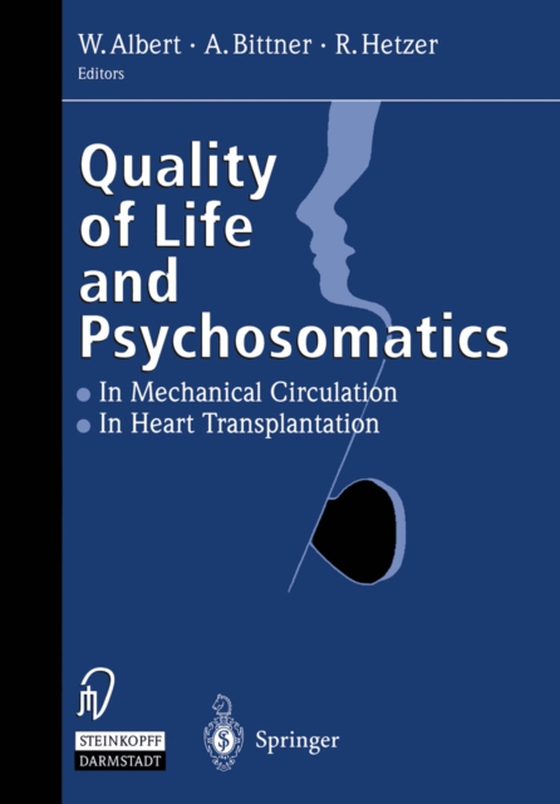
Quality of Life and Psychosomatics e-bog
875,33 DKK
(inkl. moms 1094,16 DKK)
Advances in heart surgical treatment have been impressive in the last 15 years. In end-stage heart disease, procedures are now performed routinely which were only experimental one or two decades ago. Heart transplantation has become a well-established procedure. According to the Gen- eral Registry of the International Society of Heart and Lung Transplantation. 40,738 heart transplantations had ...
E-bog
875,33 DKK
Forlag
Steinkopff
Udgivet
6 december 2012
Genrer
Psychiatry
Sprog
English
Format
pdf
Beskyttelse
LCP
ISBN
9783642959790
Advances in heart surgical treatment have been impressive in the last 15 years. In end-stage heart disease, procedures are now performed routinely which were only experimental one or two decades ago. Heart transplantation has become a well-established procedure. According to the Gen- eral Registry of the International Society of Heart and Lung Transplantation. 40,738 heart transplantations had been performed through the end of 1997 with survival rates of 78 % at one year, 65 % at five years, and 42 % at ten years. The progress in this field has been due to intense efforts in understanding and modulating immune responses to the trans- planted heart, to elaborate therapeutic strategies to constrain infections, and to improved out-patient care. Accordingly, heart transplantation is integrated into the facilities of the health care systems, the routine of physicians, and the awareness of patients. The resulting increase in potential organ recipients has not been met, however, by an equivalent increase of available donor organs. This increasing discrepancy has forced the technical improvement and clinical evalua- tion of mechanical circulatory support systems as an option for treatment of critically ill patients with a failing heart. Initially, these assist devices were only used to maintain sufficient circulation in post-cardiotomy heart failure until myocardial function had recov- ered. Since the late 1980s, their primary use has been that of bridging patients with heart failure until a suitable organ is available so that heart transplantation can be performed.
 Dansk
Dansk

